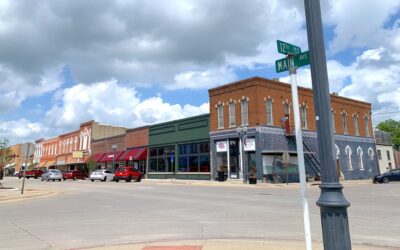
Marker Text
Note: The term “Indian” is used instead of “Native American” or “American Indian” as it was the common usage of the time this marker was cast.
The general Indian uprising of 1864 centering in the Platte Valley caused great loss of life and property among the early settlers. The area of one of the most dramatic events associated with this outbreak is marked with a stone monument three miles south of here. There, on a day in August, 1864, George Martin, an ex-English jockey who had come to Hall County in 1862, and his two young sons, Nat and Robert, were loading hay in a field near their homestead. Suddenly they were attacked by a small band of Sioux Indians. While the father attempted to ward off the attackers from the wagon with his repeating rifle, the boys jumped on their mare and, riding double, started for home. Pursued by the Sioux, the fleeing pony and her riders became targets for numerous arrows, one of which passed through Nat’s body and lodged in Robert’s back. Thus pinned together by a single arrow, the boys tumbled from their horse. The Indians, evidently believing that the boys were nearly dead, rode away without scalping them. Robert never recovered fully from his back injury, and although Nat nearly died of his wounds he lived to tell this story to his grandchildren.
Location
Near Exit 305, interchange visitor center south of I-80 on Road 40C, Hall County, Nebraska. View this marker’s location: 40.79653, -98.492595




